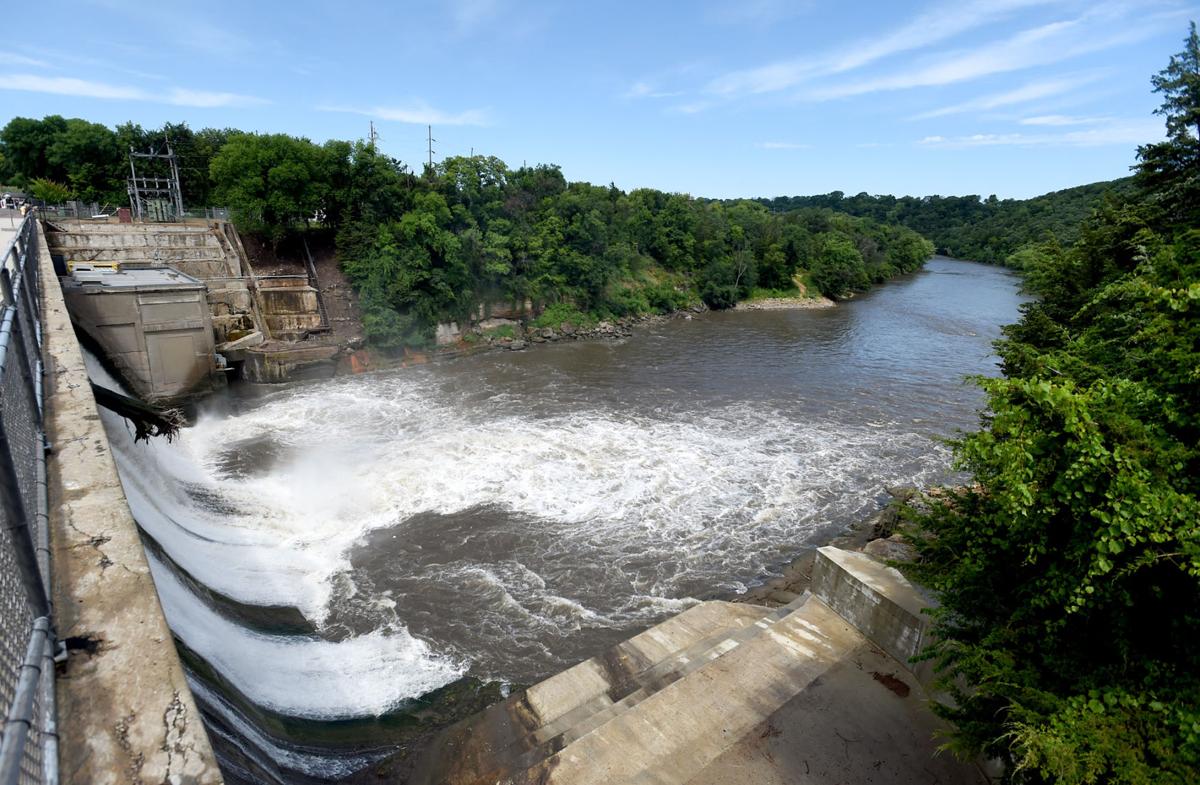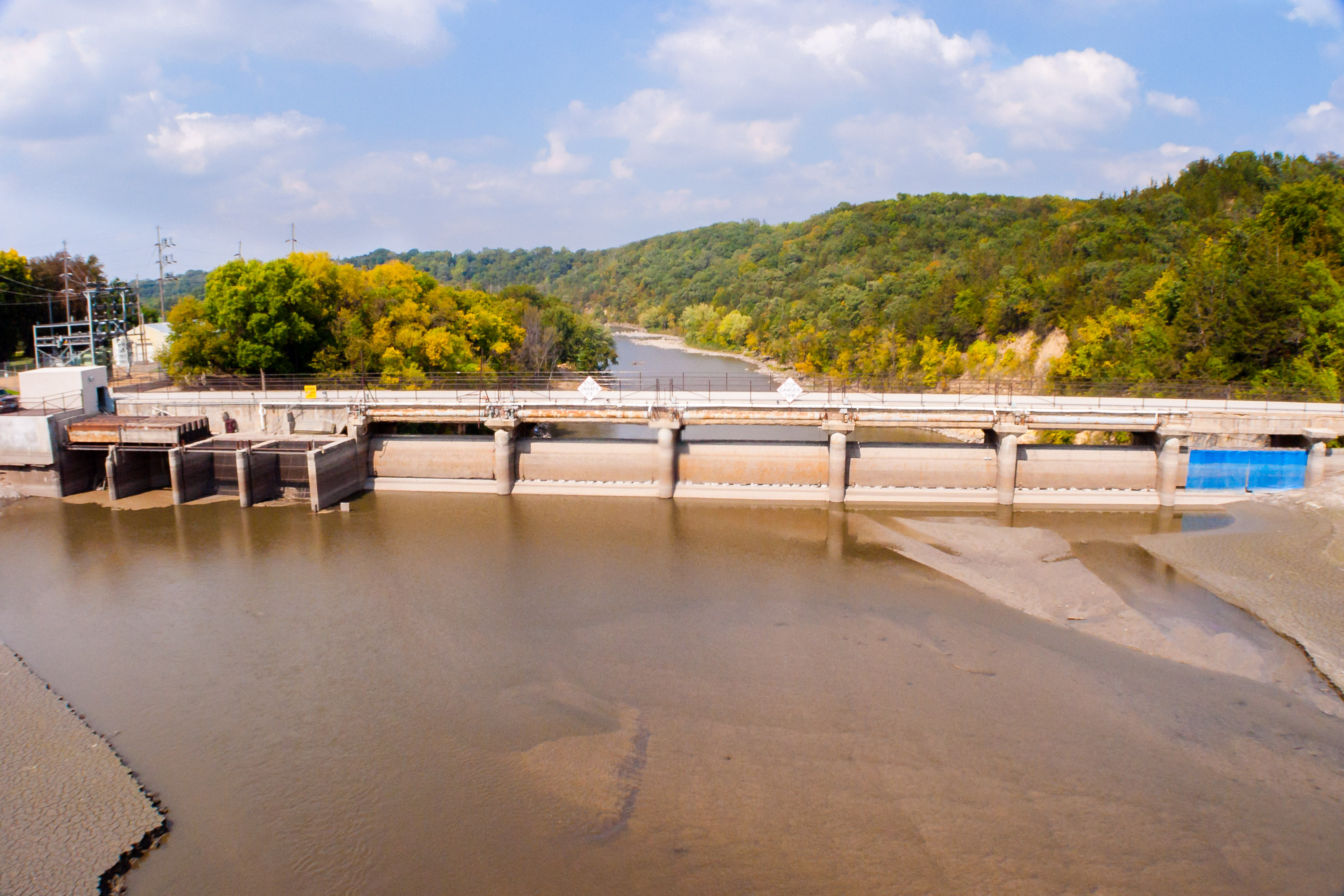Historical Overview of the Rapidan Dam Break

Rapidan dam break – The Rapidan Dam, constructed in 1890, was a vital structure impounding the Rapidan River in Madison County, Virginia. Its primary purpose was to supply water to the growing city of Richmond, approximately 60 miles to the east.
The roaring waters of the Rapidan River unleashed their fury upon the unsuspecting town below when the dam holding them back gave way. In a matter of moments, the torrent surged forward, obliterating everything in its path. The once-serene Rapidan Dam, nestled in the heart of Virginia’s Blue Ridge Mountains ( rapidan dam location ), had become a symbol of devastation.
As the floodwaters receded, leaving behind a trail of wreckage, the community struggled to come to terms with the catastrophic loss.
Construction and Design
The Rapidan Dam was an earthen embankment dam, a type of dam constructed by compacting soil and rock to form an impermeable barrier. It stood 50 feet tall and stretched 1,200 feet across the riverbed. The dam’s design incorporated a central spillway to release excess water during periods of heavy rainfall.
The turbulent waters of the Rapidan Dam break raged through the countryside, leaving a trail of destruction in its wake. The torrent swept through Mankato, Minnesota , inundating homes and businesses. The once-bustling city was transformed into a scene of devastation, its streets filled with debris and the lingering echoes of the catastrophe that had befallen it.
Factors Contributing to the Failure
Several factors contributed to the catastrophic failure of the Rapidan Dam on September 8, 1890. Excessive rainfall, inadequate spillway capacity, and poor maintenance all played significant roles in the disaster.
The torrent of water from the Rapidan Dam break surged through the valley, leaving a trail of devastation in its wake. Where is this infamous dam, you may ask? The answer lies just a stone’s throw away at where is rapidan dam.
The dam’s collapse unleashed a force of nature that tore through the landscape, forever etching its mark on the history of the region.
- Excessive Rainfall: In the days leading up to the dam break, the region experienced torrential rainfall, exceeding the dam’s design capacity.
- Inadequate Spillway Capacity: The dam’s spillway was insufficient to handle the volume of water flowing into the reservoir. As a result, water overtopped the dam, eroding its earthen embankment.
- Poor Maintenance: The dam had not been properly maintained, leading to cracks and seepage in the embankment. These weakened areas further compromised the dam’s integrity.
Impact and Aftermath of the Dam Break: Rapidan Dam Break

The catastrophic failure of the Rapidan Dam unleashed a torrent of water that left a trail of devastation in its wake. The immediate consequences were both devastating and far-reaching, while the long-term aftermath continues to shape the region.
Infrastructure Damage
The dam break caused extensive damage to infrastructure. The dam itself was completely destroyed, and the resulting floodwaters washed away bridges, roads, and power lines. The town of Stanardsville, located downstream from the dam, was particularly hard hit. Many buildings were destroyed, and the town’s water supply was contaminated.
Property Damage
The floodwaters also caused significant property damage. Homes, businesses, and farms were destroyed or damaged. Many people lost their belongings, and some were forced to relocate.
Environmental Damage
The dam break also had a devastating impact on the environment. The floodwaters scoured the riverbed, destroying fish and wildlife habitat. The sediment carried by the floodwaters also polluted the river and downstream reservoirs.
Recovery and Restoration, Rapidan dam break
The recovery and restoration efforts after the Rapidan Dam break were extensive. The dam was rebuilt, and the surrounding area was repaired. The town of Stanardsville was rebuilt, and its water supply was restored. The riverbed was also restored, and fish and wildlife habitat was re-established.
The Rapidan Dam break was a tragedy that had a profound impact on the region. However, the recovery and restoration efforts were successful, and the area has since recovered.
Lessons Learned and Legacy of the Rapidan Dam Break
The catastrophic Rapidan Dam break in 1889 left an enduring mark on the annals of water infrastructure and engineering practices. The tragedy triggered a comprehensive reassessment of dam safety protocols, leading to significant advancements in design, construction, and maintenance standards.
In the wake of the disaster, engineers recognized the need for more stringent regulations and oversight of dam projects. The American Society of Civil Engineers (ASCE) established a committee to investigate the failure and develop recommendations for improving dam safety. These recommendations formed the basis of the first national dam safety guidelines, which were later adopted by many other countries.
Safety Protocols and Engineering Practices
- Adoption of more rigorous design criteria, including increased spillway capacity and structural reinforcement.
- Implementation of regular inspections and monitoring systems to identify potential hazards and address them promptly.
- Establishment of emergency action plans and protocols to minimize the impact of potential dam failures.
Ongoing Debates about Dam Safety and Risk Management
Despite the advancements made in dam safety, debates continue about the appropriate balance between risk and benefits. Some argue for stricter regulations and more conservative design approaches, while others advocate for a more nuanced approach that considers the specific characteristics of each dam and its surroundings.
The ongoing debates reflect the complex challenges of managing water infrastructure in an era of climate change and increasing population growth. As water scarcity becomes more prevalent, the demand for dams and other water storage facilities is likely to increase, necessitating a careful balancing of risks and benefits.
Historical Significance and Legacy
The Rapidan Dam break remains a pivotal event in the history of water infrastructure. It serves as a constant reminder of the importance of dam safety and the need for continuous vigilance and innovation in this field.
The legacy of the disaster extends beyond its immediate impact. It has shaped the way engineers approach dam design and construction, and it has influenced the development of international standards and best practices for water infrastructure management.
The rapidan dam break unleashed a torrent of water that ravaged the countryside, leaving a trail of destruction in its wake. The raging waters surged through mankato minnesota , sweeping away homes and businesses in its relentless path. The town was left reeling from the devastation, as residents struggled to rebuild their shattered lives.
The rapidan dam break unleashed a torrent of water, causing widespread flooding in the surrounding area. The rapidan dam flooding devastated homes and businesses, leaving a trail of destruction in its wake. The dam break serves as a stark reminder of the importance of dam safety and the potential consequences of dam failure.